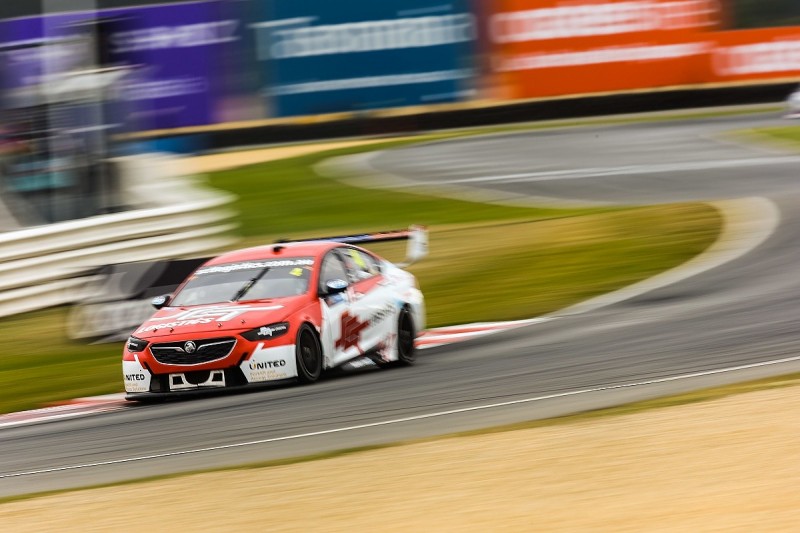How Ford updated Mustang after controversial Supercars parity call
Ford's new Mustang will run a tweaked aerodynamic package in Perth this weekend thanks to a controversial parity adjustment made by Supercars

The Mustang's original aero package was deemed legal coming into the 2019 campaign, but it has since dominated the season with a clear advantage of high-speed circuits like Phillip Island and Albert Park.
That form has led to Supercars enforcing changes, with the most visible aspect the revision to its rear wing endplates.
The large original units caused a stir when the Mustang first broke cover last year and it is considered by many to a key feature of the car's perceived mid-corner downforce advantage.
That meant the endplates were a key target of the parity adjustment with the initial announcement confirming that they would be reduced in size.
Tickford Racing boss Tim Edwards offered up the first look at the new endplates on Instagram late last week and the image, pictured below, suggests that the new units do not extend as far down the rear of the car as the old ones did.

The length of the endplates would be able to affect yaw performance. On a car, you get these massive flow patterns called 'trailing vortices' off the back, and these might shift around during the corners when the car's under yaw.
So that means the rear wing's creating less downforce as the different air pressures are mixing with those vortices.
Extending the endplate downwards helps to keep the high pressure on top and the low pressure on the bottom, stopping that mixing.
So now it is shortened, it means the bottom section of the rear wing, mounted to the boot, is going to be more affected by that trailing vortex.
The other changes to the Mustang are a lower gurney flap and a shorter undertray. The former will result in a straightforward loss of downforce on the rear wing, with the distribution of high pressure over the top of the wing compromised.
Reducing the length of the undertray means the car's not going to be quite as resistant to any effects of lift at the front end.
This is because more high-pressure air might drift underneath the car, which is not ideal for downforce levels in the corner.
Clipping the downforce should also reduce the Mustang's drag, perhaps bringing it closer in terms of straightline performance to the ZB Commodore, which is considered the stronger of the two cars in this aspect.

Be part of the Autosport community
Join the conversationShare Or Save This Story
Subscribe and access Autosport.com with your ad-blocker.
From Formula 1 to MotoGP we report straight from the paddock because we love our sport, just like you. In order to keep delivering our expert journalism, our website uses advertising. Still, we want to give you the opportunity to enjoy an ad-free and tracker-free website and to continue using your adblocker.















Top Comments